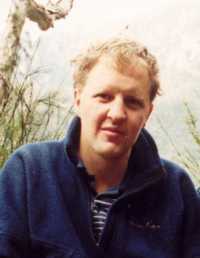
Paavo Jumppanen
Developer/EngineerAs with many good ideas, Harmonic Balancing has its origins in a number of life experiences leading up to a seminal realization. The seed of the idea came from my time spent as a researcher at the University of Tasmania whereupon I was using homomorphic signal processing techniques in the analysis of laser schlieren signals in transitional combustion flows. My reference book on the subject (Digital Signal Processing by A.V.Oppenheim & R.W. Schafer ISBN 0-13-214107-8) had a particularly interesting section (10.7.3) giving an overview of homomorphic deconvolution applied to the restoration of acoustic recordings. More specifically they were using the technique to remove the frequency response of the recording horn from recordings of Enrico Caruso. At the time I found the idea very impressive but saw no direct use for it and there it remained dormant in my mind.
Concurrently, I was also developing spectrum analysis software for the same research project that would, over a number of years and after my departure from that institution, evolve into what is now AtSpec, a PC based 2 channel FFT spectrum analysis software package.
I was simultaneously in the process of designing and developing what I was hoping to be my definitive pair of loudspeakers. Having invested a large amount of time and effort in both modelling and testing and trialing a number of different drivers I settled upon a design that I was satisfied with but only to a point. Coming from a purest standpoint I was somewhat naive to believe that if you had good speakers and good components then any recording you happen to listen to should sound good. By and large this held true for 70-80% of the recorded music I listened to but there was always those exceptional recordings that raised doubts in my mind as to the quality of the speakers that I had designed. So much so that I was in the habit of continually tweaking the crossover to get the right tonal balance. Then after considerable time I reverted back to the original design and resigned myself to the fact that my speakers weren’t up to par (or so I thought at the time).
For a number of years this whole issue of how some recordings just sounded so distressing while others sounded beautifully serene continued to trouble me. It was then, quite by accident, while checking the speaker performance with AtSpec that I discovered, much to my surprise, that the recordings that I found difficult to listen to had distinctive spectral characteristics that tallied with my perception of how the recording sounded. It was a vindication for the speaker design and an indictment on the recording. In hindsight this seemed to make perfect sense and shouldn’t have come as a surprise but yet it did.
The concept of Harmonic Balancing had sprung to life : If we can measure the mean spectrum of a recording we can test the quality of the sound through its spectrum and our perception of the song, and if found to be lacking we can construct an equalization filter to correct for any deficiencies. Over the following five years Harmonic Balancing has been transformed from a concept into reality.
